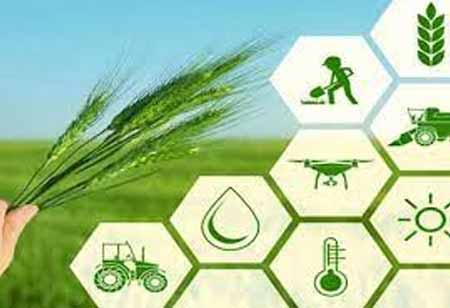Thank you for Subscribing to Agri Business Review Weekly Brief
Enhancing Indoor Farming with Advanced IoT Sensor Technology
Advanced IoT sensor technology in indoor farming optimises crop growth by monitoring environmental conditions in real time, improving efficiency, reducing waste and enhancing productivity.

By
Agri Business Review | Wednesday, September 11, 2024
Stay ahead of the industry with exclusive feature stories on the top companies, expert insights and the latest news delivered straight to your inbox. Subscribe today.
Advanced IoT sensor technology in indoor farming optimises crop growth by monitoring environmental conditions in real time, improving efficiency, reducing waste and enhancing productivity.
FREMONT CA:Indoor farming integrates advanced IoT sensor technology, enabling more efficient, precise and sustainable agricultural practices. These sensors monitor vital environmental factors such as humidity, temperature, light and soil moisture in real-time, providing farmers with critical data to optimise crop growth. By automating and fine-tuning conditions, IoT sensors reduce resource consumption, minimise waste and improve yield quality. This innovation enhances productivity and makes indoor farming more resilient to external factors, positioning it as a vital solution for food production in urban environments and areas facing climate challenges.
Benefits of Precision Agriculture Through Smart Greenhouse Sensors
IoT sensors in smart greenhouses provide farmers with actionable data on the growing environment and crops, allowing for precise adjustments to climate control and growing systems. This leads to optimised growing conditions, higher crop yields and superior quality. By leveraging data from temperature and moisture sensors, farmers can fine-tune irrigation schedules to ensure plants receive the right amount of water. Real-time monitoring also enhances crop management by allowing immediate adjustments to environmental factors like humidity, preventing potential issues such as plant diseases. Additionally, IoT technology reduces resource consumption, minimising energy and water use, cutting waste and lowering costs. Automating data collection through wireless sensor networks eliminates the need for manual monitoring, decreases labour requirements, reduces human error, and enables more informed decision-making.
Integrating IoT Sensors into Indoor Agriculture Systems
The use of advanced sensor technology in climate control systems is widespread, with many designers and manufacturers already incorporating sensors to optimise system performance. However, in indoor agriculture, the need for precision and immediate reactivity in sensors is far more significant than in other applications, making advanced sensor technology critical for success.
Partnering with an advanced sensor manufacturer is the best approach for adding IoT agriculture sensors to climate control systems in indoor farming. Working directly with manufacturers offers several advantages that enhance operational efficiency and performance.
Customisation: Manufacturers can create tailored solutions that meet specific indoor farming setups' unique needs. Unlike standard sensors, custom-designed sensors can target specific parameters essential to plant health, ensuring precise and efficient monitoring of growing conditions.
Integration: Manufacturers possess the expertise to ensure seamless integration of sensors into existing farming systems. This includes incorporating sensors into other climate control components, such as HVAC units or irrigation systems, to achieve cohesive, efficient operations.
Innovation: Collaborating allows indoor farms to access the latest sensor technologies. Manufacturers continuously invest in research and development, enabling farms to use cutting-edge solutions that enhance accuracy, reliability and overall functionality.
Support: Establishing a direct relationship provides ongoing access to expert advice, troubleshooting assistance, and support for updating and scaling the sensor network to meet the evolving demands of indoor farming.
Cost-effectiveness: Lastly, while custom sensor solutions may seem costly upfront, they are generally cost-effective in the long run. Custom sensors help optimise resource use, reduce waste, and boost crop yields, ultimately leading to significant savings and higher returns for indoor farming operations.
As this technology advances, it will play a crucial role in making indoor farming more sustainable and productive, addressing urban food demands, and adapting to changing climate conditions—the integration of IoT sensors positions indoor farming as a forward-thinking solution for modern agricultural challenges.





